Architectural Wonders: Berlin's Iconic Sights
Join this free walking tour to explore Berlin's architectural masterpieces and significant landmarks, showcasing the city's rich history and vibrant culture.
Time
4 Hours
Stops
12 Places
Distance
7.3 km
Jewish Museum Berlin
Begin your tour at the Jewish Museum Berlin, renowned for its striking architecture designed by Daniel Libeskind, which symbolizes the history and culture of Jews in Germany.

Jewish Museum Berlin (Source: Google Maps)
The Jewish Museum Berlin, designed by architect Daniel Libeskind, stands as a poignant symbol of Jewish history in Germany. Opened in 1999, its zigzagging form represents the fractured history of Jews in Germany, evoking deep emotional responses. The building's unique architecture features sharp angles and voids, symbolizing the absence of lives lost during the Holocaust. Inside, the museum houses a vast collection of artifacts and exhibitions that narrate the story of Jewish life in Germany from the Middle Ages to the present. The garden, known as the 'Garden of Exile,' further enhances the experience, representing the dislocation and alienation faced by Jews. Libeskind's visionary design has made the museum a significant cultural landmark, attracting visitors who seek to understand the complexities of history and identity.
Checkpoint Charlie
Walk to Checkpoint Charlie, the famous crossing point between East and West Berlin during the Cold War, offering a glimpse into the city's divided history.
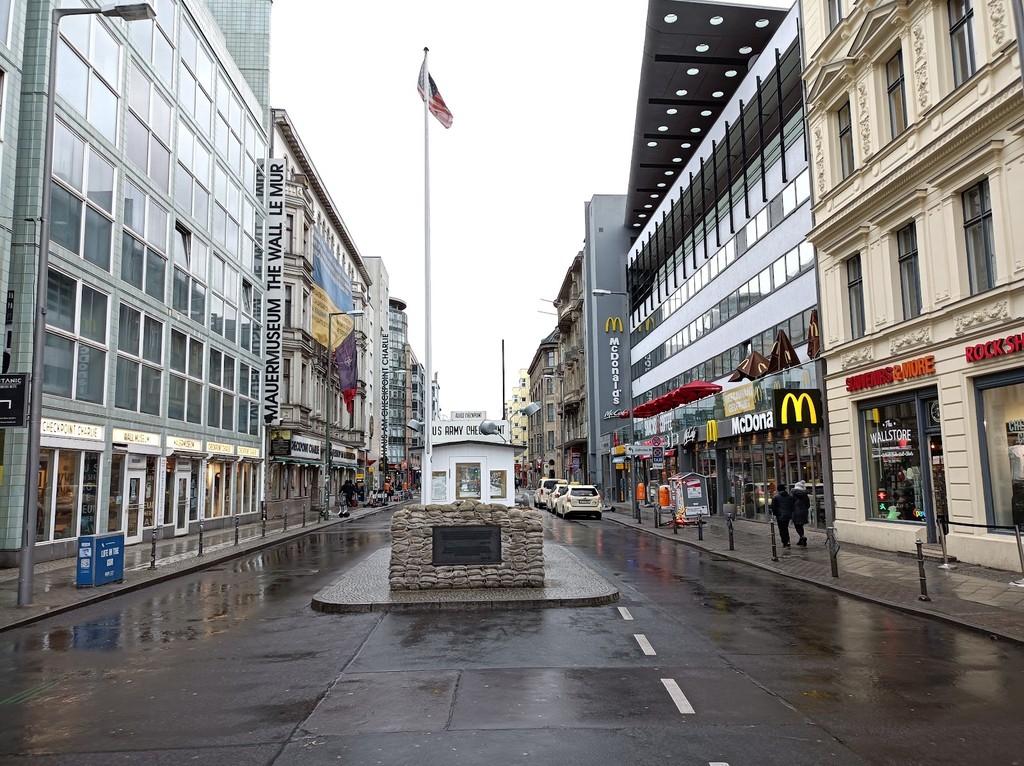
Checkpoint Charlie (Source: Google Maps)
Checkpoint Charlie, established in 1961, was the most famous border crossing point between East and West Berlin during the Cold War. It served as a symbol of the division of the city and the ideological conflict between the Eastern Bloc and the West. The checkpoint was heavily guarded and became a focal point for espionage and escape attempts. Today, a replica of the original guardhouse and sign marks the site, serving as a poignant reminder of the past. Visitors can learn about the stories of those who risked their lives to cross the border and the political tensions that defined this era. The surrounding area features informational panels and a small museum, detailing the history of the Berlin Wall and the lives affected by this division. Checkpoint Charlie remains a significant historical landmark, attracting tourists interested in the dramatic history of Berlin.
Gendarmenmarkt
Head to Gendarmenmarkt, a beautiful square known for its stunning architectural ensemble of the Konzerthaus, French Cathedral, and German Cathedral.
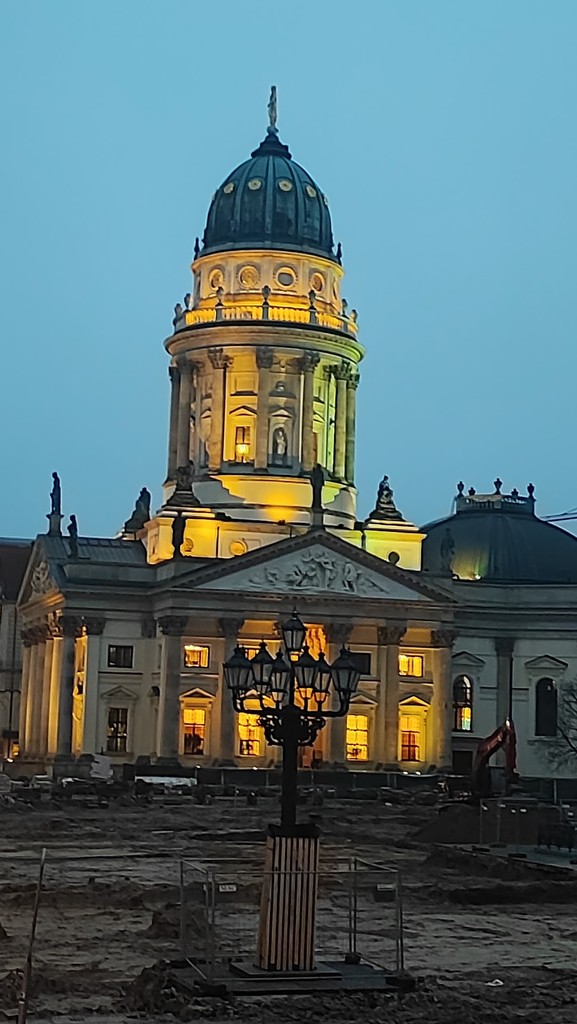
Gendarmenmarkt (Source: Google Maps)
Gendarmenmarkt, often regarded as Berlin's most beautiful square, is an architectural masterpiece surrounded by three iconic structures: the Konzerthaus, the French Cathedral, and the German Cathedral. The square's name, which translates to 'Gendarme Market,' dates back to the 18th century when it served as a marketplace for gendarmes. The Konzerthaus, designed by Karl Friedrich Schinkel, is a neoclassical concert hall that hosts various performances and cultural events. The French and German Cathedrals, both featuring stunning domes, represent the city's rich religious history and architectural diversity. The square is not only a feast for the eyes but also a vibrant cultural hub, often hosting events, markets, and festivals. With its harmonious blend of architecture and history, Gendarmenmarkt is a must-visit landmark that captures the essence of Berlin's architectural heritage.
Reichstag Building
Continue to the Reichstag Building, home of the German Parliament, admired for its historic significance and the striking glass dome designed by Norman Foster.

Reichstag Building (Source: Google Maps)
The Reichstag Building, home to the German Parliament, is a symbol of Berlin's political history and architectural innovation. Completed in 1894, the building showcases a blend of neo-Renaissance and modern styles, with its iconic glass dome designed by architect Norman Foster added during its restoration in the late 1990s. The dome serves as a metaphor for transparency in governance, allowing visitors to view the parliamentary debates below. The Reichstag has witnessed significant historical events, including the rise of the Nazi regime and the reunification of Germany. Today, it stands as a testament to democracy and is a popular landmark for tourists. The building's impressive façade, adorned with sculptures and a grand staircase, reflects the grandeur of German architecture. Visitors can admire the structure from the outside and learn about its historical significance, making it a key stop on any architectural tour of Berlin.
Tiergarten (Adjacent to Reichstag)
Take a brief stroll through the edge of Tiergarten, Berlin’s large urban park, providing a refreshing green space amidst the city’s landmarks.
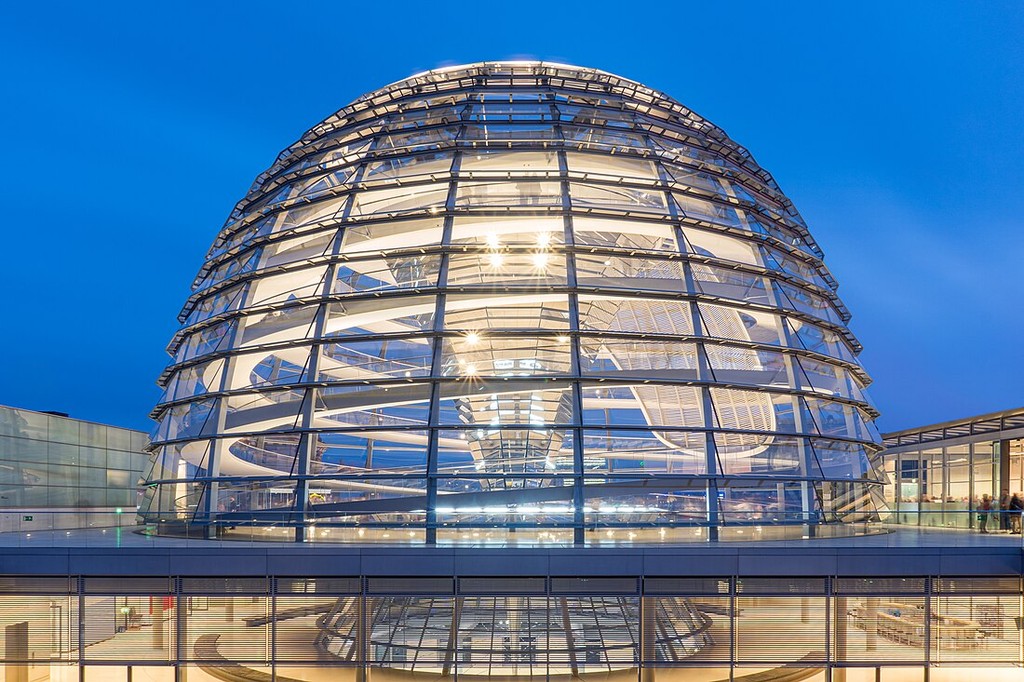
Tiergarten (Adjacent to Reichstag) (Source: Google Maps)
Brandenburg Gate
Visit the iconic Brandenburg Gate, a symbol of Berlin and German reunification, showcasing neoclassical architecture.

Brandenburg Gate (Source: Google Maps)
The Brandenburg Gate, one of Berlin's most iconic landmarks, is a neoclassical triumphal arch that symbolizes German reunification. Designed by Carl Gotthard Langhans and completed in 1791, it features twelve Doric columns and stands at 26 meters tall. Originally commissioned by Frederick William II as a sign of peace, the gate became a symbol of division during the Cold War, standing directly next to the Berlin Wall. Today, it is a popular gathering place for tourists and locals alike, often hosting events and celebrations. The gate's historical significance is further emphasized by its location at the end of Unter den Linden, a grand boulevard that leads to the heart of Berlin. Illuminated at night, the Brandenburg Gate offers a stunning view, making it a must-see for visitors interested in the architectural and political history of the city.
Unter den Linden
Stroll along Unter den Linden, Berlin’s most famous boulevard, lined with grand buildings and landmarks, providing a sense of the city's imperial past.
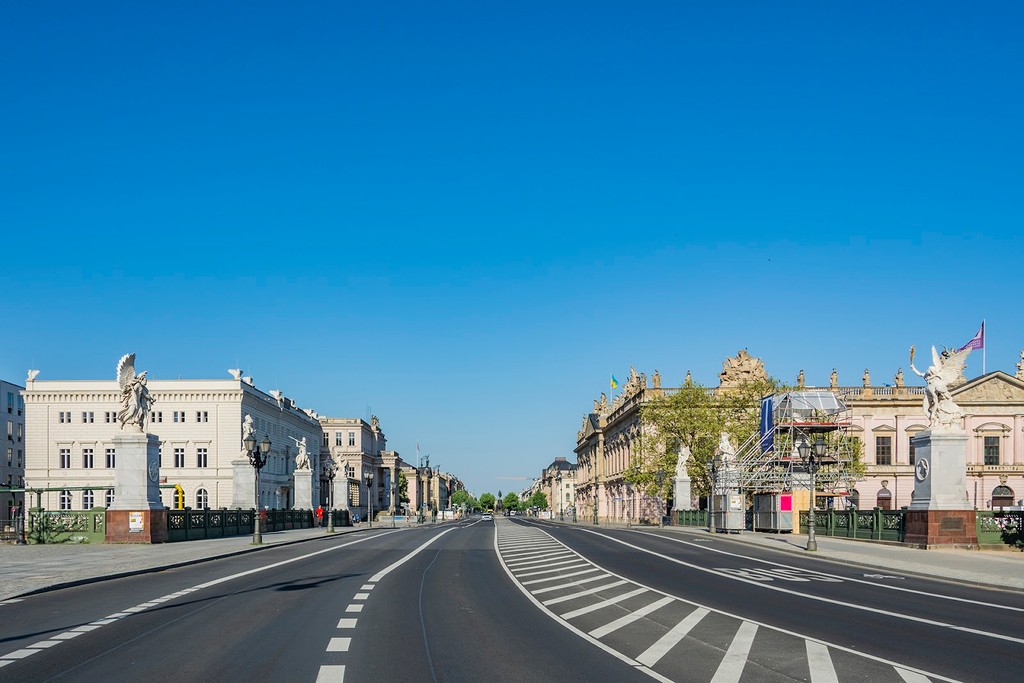
Unter den Linden (Source: Google Maps)
Unter den Linden, Berlin's most famous boulevard, is a historic street lined with grand buildings, monuments, and lush linden trees. Originally a royal promenade, it stretches from the Brandenburg Gate to the Schlossplatz, showcasing the city's imperial past. The boulevard is flanked by significant landmarks, including the Staatsoper (State Opera) and the Humboldt University, both of which reflect the architectural grandeur of the 18th and 19th centuries. As you stroll along Unter den Linden, you'll encounter various cultural institutions, shops, and cafes that embody Berlin's vibrant atmosphere. The street has witnessed numerous historical events, from royal parades to public protests, making it a living testament to the city's dynamic history. Today, Unter den Linden serves as a key thoroughfare for both pedestrians and vehicles, blending the old with the new in a captivating urban landscape.
Bebelplatz
Continue to Bebelplatz, a historic square surrounded by impressive buildings like the State Opera and St. Hedwig's Cathedral, known for the book burning memorial.

Bebelplatz (Source: Google Maps)
Bebelplatz is a historic square located in the heart of Berlin, known for its dramatic history and architectural significance. Surrounded by impressive buildings such as the State Opera and St. Hedwig's Cathedral, the square is a cultural hub that has witnessed significant events, including the infamous book burning of 1933. A memorial, designed by Micha Ullman, now sits beneath the square's surface, symbolizing the lost literature and intellectual freedom. The square is named after August Bebel, a prominent socialist politician, reflecting its historical ties to political movements in Germany. With its neoclassical architecture and rich history, Bebelplatz serves as a reminder of Berlin's complex past while remaining a vibrant space for public gatherings and events. Visitors can appreciate the square's beauty and its role in shaping the city's cultural landscape.
Museum Island
Explore Museum Island, a UNESCO World Heritage site, home to five world-renowned museums, each with its own architectural beauty.
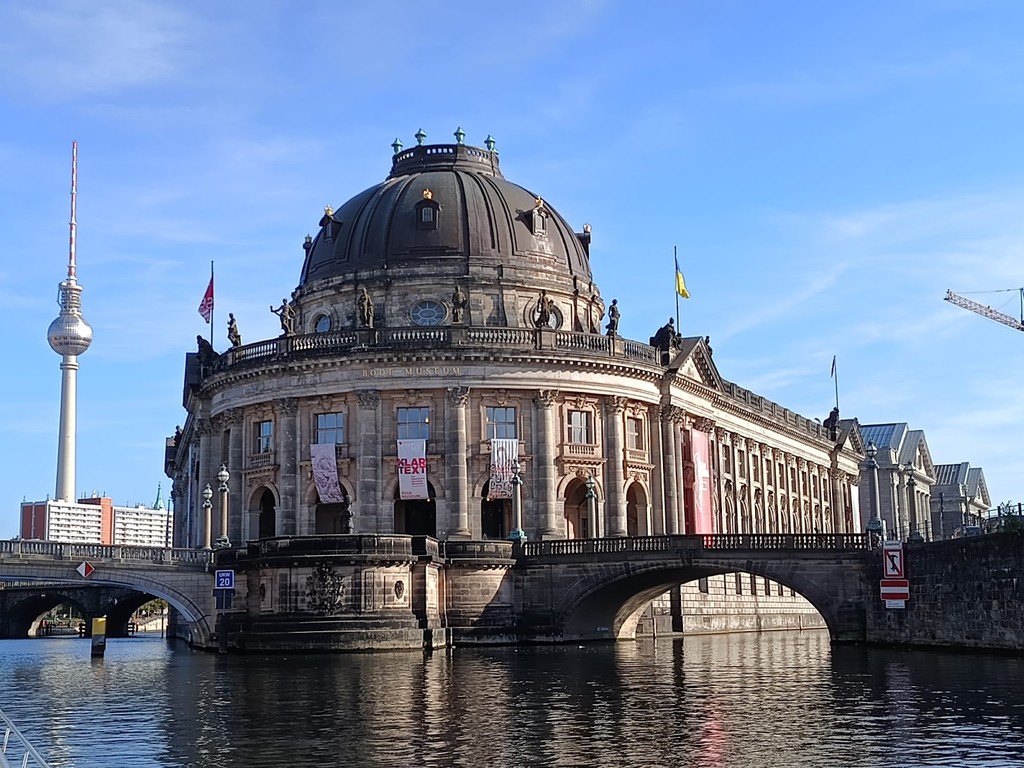
Museum Island (Source: Google Maps)
Museum Island, a UNESCO World Heritage site, is an architectural treasure trove located in the heart of Berlin. Home to five world-renowned museums, including the Pergamon Museum and the Altes Museum, it showcases a diverse range of art and artifacts spanning centuries. The island's layout reflects the evolution of museum architecture, with each building representing different historical styles, from neoclassical to modernist. Museum Island has played a crucial role in the preservation of cultural heritage and is a focal point for art enthusiasts and historians. The island's historical significance is further enhanced by its picturesque setting along the Spree River, providing a stunning backdrop for visitors. As you explore Museum Island, you'll encounter not only remarkable collections but also the architectural beauty that defines Berlin's cultural landscape.
Berlin Cathedral (Berliner Dom)
Head to Berlin Cathedral, a magnificent example of Baroque architecture, situated on Museum Island.

Berlin Cathedral (Berliner Dom) (Source: Google Maps)
The Berlin Cathedral, or Berliner Dom, is a magnificent example of Baroque architecture and a prominent landmark on Museum Island. Completed in 1905, the cathedral features a striking green dome and ornate interiors, showcasing the grandeur of the Protestant faith. The building was constructed to symbolize the power of the Prussian monarchy and has undergone several restorations, particularly after World War II. Inside, visitors can admire intricate mosaics, stunning stained glass windows, and the impressive organ, which is one of the largest in Germany. The cathedral also offers panoramic views from its dome, inviting visitors to appreciate the beauty of Berlin from above. Surrounded by other cultural institutions on Museum Island, the Berlin Cathedral stands as a testament to the city's rich religious and architectural history.
Berlin TV Tower (Fernsehturm)
Walk to the Berlin TV Tower, the tallest structure in Germany, offering panoramic views of the city and a striking example of 1960s architecture.
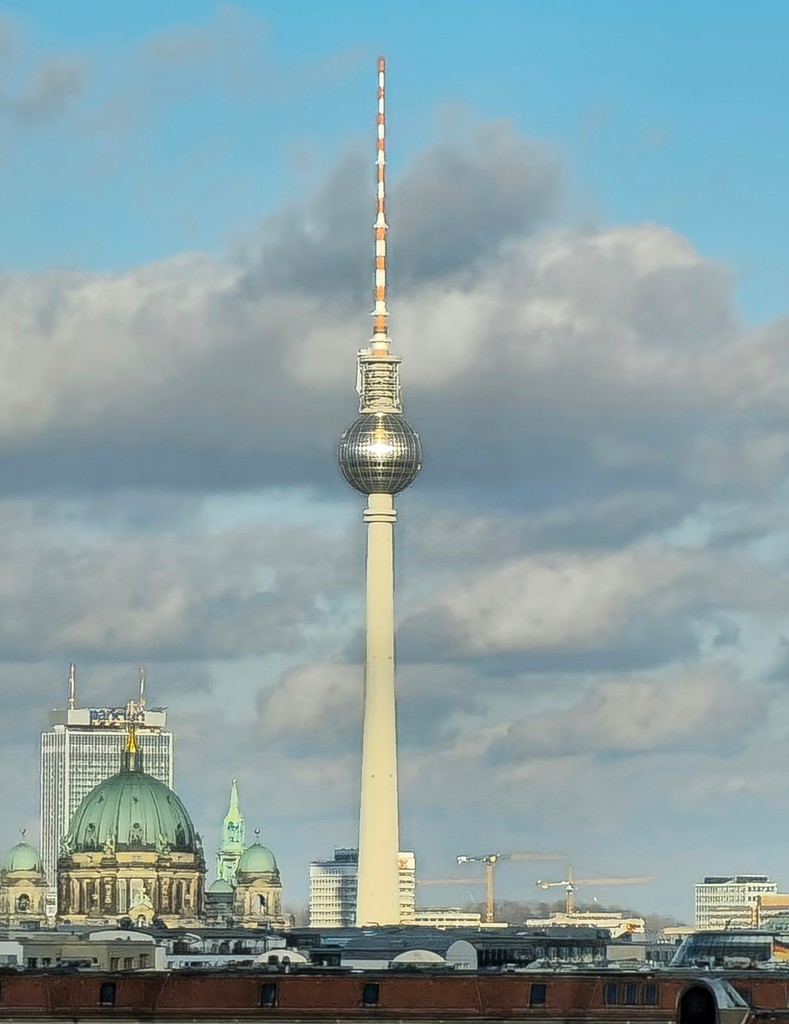
Berlin TV Tower (Fernsehturm) (Source: Google Maps)
The Berlin TV Tower, or Fernsehturm, is the tallest structure in Germany and a striking example of 1960s architecture. Completed in 1969, the tower stands at 368 meters tall and offers breathtaking panoramic views of the city from its observation deck. Designed by the East German government, the tower symbolizes the technological advancements of the era and serves as a landmark for both locals and tourists. The unique design features a glass sphere at the top, which houses a restaurant and viewing platform, providing visitors with a unique dining experience amidst stunning views. The tower is particularly beautiful at night when illuminated, creating a captivating sight against the Berlin skyline. As a focal point of the city, the Berlin TV Tower represents Berlin's blend of history, culture, and modernity.
Alexanderplatz
Conclude your tour at Alexanderplatz, a bustling square known for its modernist architecture and vibrant atmosphere, conveniently located at the Alexanderplatz Bahnhof.
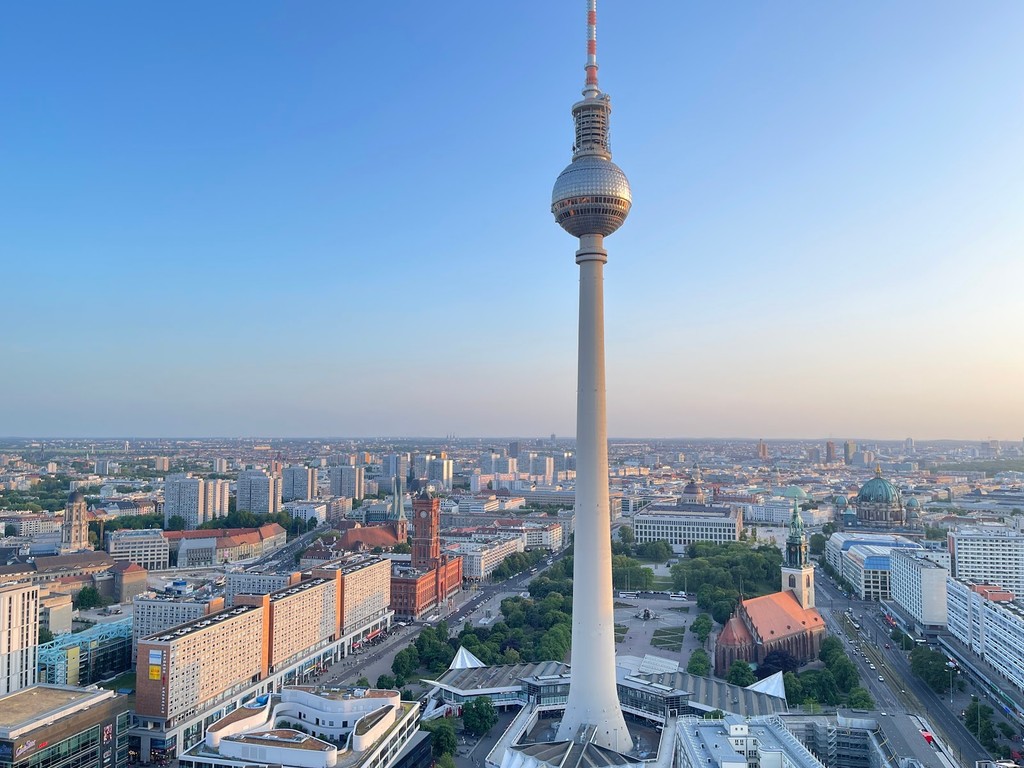
Alexanderplatz (Source: Google Maps)
Alexanderplatz is a bustling square in the heart of Berlin, known for its vibrant atmosphere and modernist architecture. Originally a marketplace, it has evolved into a major commercial and transportation hub, attracting visitors and locals alike. The square is dominated by the iconic Berlin TV Tower, which offers stunning views of the city. Surrounding Alexanderplatz are various shopping centers, restaurants, and cultural venues, making it a lively destination for entertainment and leisure. The square has a rich history, having been a focal point for political demonstrations and social movements throughout the 20th century. Today, Alexanderplatz combines historical significance with contemporary urban life, serving as a gateway to explore the diverse offerings of Berlin.
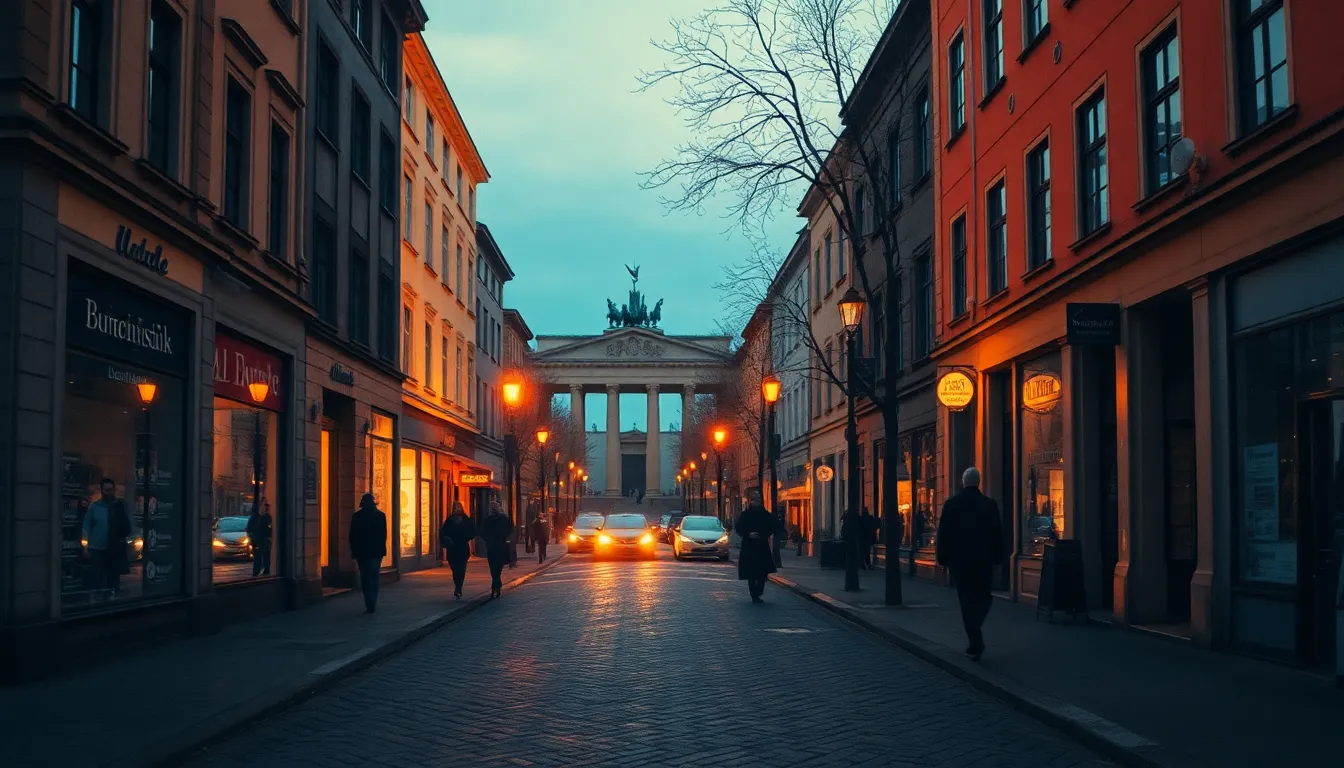
Your travels, your rules.
Create your own Free Walking Tours.
Set your preferences, distances and anything you want to do or see.
Completely free, no payment required.